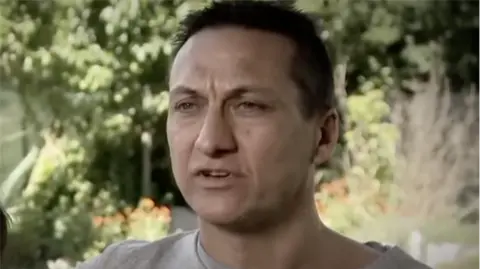In a captivating turn of events in rural Victoria, Erin Patterson, once celebrated as a "super sleuth" in online true crime circles, has transformed into the subject of intense public fascination following her conviction in a notorious mushroom poisoning case. Two years ago, a family gathering at Patterson's home ended tragically when three guests died after consuming beef Wellingtons laced with toxic mushrooms.
This courtroom drama, evaluated over an extensive 11-week trial, saw massive media and public engagement, with global journalists flocking to Morwell to cover the proceedings. Spectators stood in line outside the small courthouse daily, eager to catch a glimpse of the developments, while the case erupted across social media platforms.
The intensity ramped up after a jury found Patterson guilty on all counts earlier this week. The sheer scale of intrigue surrounding the trial led criminal psychologist Tim Watson-Munro to liken it to Shakespeare's "Macbeth," pointing to its dramatic elements and relatable themes.
The courtroom buzz was further amplified by the presence of documentary crews and an avid true crime audience, many of whom shared Patterson's interests prior to the trial. For instance, often adorned in cozy attire despite the cold, fans like Tammy Egglestone traversed long distances to witness firsthand the unfolding drama. Patterson's previous online activities, including her notable membership in a community that scrutinized the infamous Keli Lane case, added layers to her character in the eyes of the public.
As the trial progressed, Patterson’s portrayal transformed from a community figure to a subject of lurid fascination. Podcasts, discussions, and memes proliferated online, with many attempting to reconstruct her motives and scrutinizing the evidence presented during the trial. Yet, while the public discourse leaned heavily towards her guilt, some expressed the need for a more nuanced view of the circumstances leading to the murders.
Amid the media frenzy, the emotional weight of the victims, Don and Gail Patterson, and Heather Wilkinson, was not lost on the local community. Councillor Nathan Hersey conveyed his concerns regarding the insensitivity displayed by some segments of the public, emphasizing the need to remember the human loss amid the ongoing intrigue.
The mushroom murder trial not only reignited the nation's long-standing interest in women's role in crime but also shone light on broader societal expectations and gender dynamics in high-profile cases. Researchers note that the portrayal of women in such contexts often evokes a mix of fascination and judgment, leaving an indelible mark on public perception.
As the trial's consequences ripple through Morwell and beyond, Erin Patterson's case serves as a stark reminder of the complex intersection between crime, media, and public fascination with the darker aspects of human nature.





















